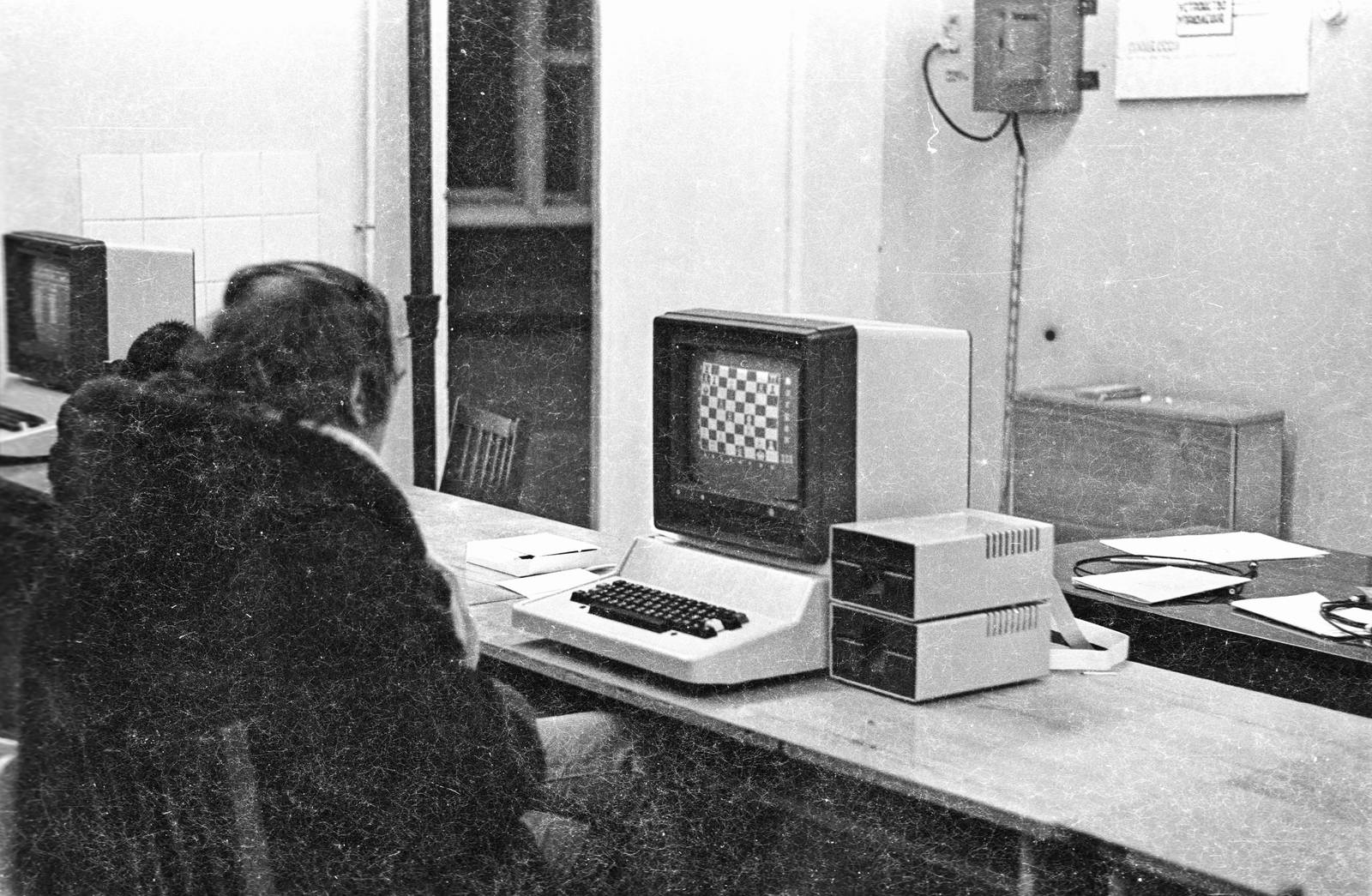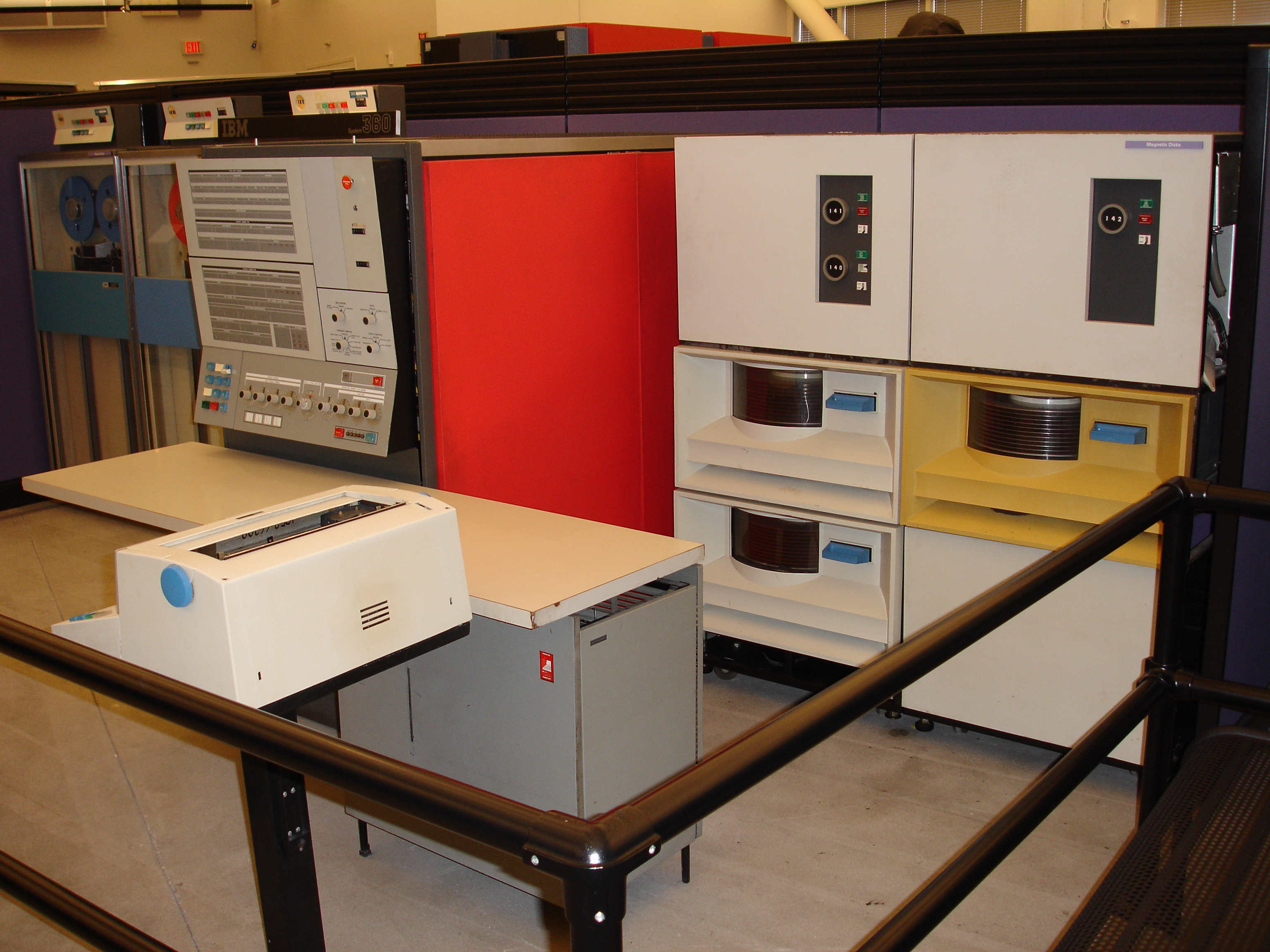|
Odra (computer)
Odra was a line of computers manufactured in Wrocław, Poland. The name comes from the Odra river that flows through the city of Wrocław. Overview The production started in 1959–1960. Models 1001, 1002, 1003, 1013, 1103, 1204 were of original Polish construction. Models 1304 and 1305 were functional counterparts of ICL 1905 and 1906 due to software agreement. The last model was 1325 based on two models by ICL. The computers were built at the Elwro manufacturing plant, which was closed in 1993. Odra 1002 was capable of only 100–400 operations per second. In 1962, Witold Podgórski, an employee of Elwro, created computer game Marienbad on a prototype of Odra 1003; it was an adaptation of a variant of Nim, as depicted in the film '' Last Year at Marienbad''. The computer could play a perfect game and was guaranteed to win. The game was never distributed outside of the Elwro company, but its versions appeared elsewhere. It was probably the first Polish computer game in his ... [...More Info...] [...Related Items...] OR: [Wikipedia] [Google] [Baidu] |
Elwro
Elwro was a Polish company that manufactured mainframe and microcomputers from 1959 until 1989. Its plant was in Wrocław. Computer models included Odra (computer), Odra mainframe systems, and the List of ZX Spectrum clones#Elwro 800 Junior, Elwro 800 Junior microcomputer for education. Overview The Wrocław Electronic Works (Wrocławskie Zakłady Elektroniczne) were established on 6 February 1959; the name ''Elwro'' was derived from the company's telegraphic address. The first model designed at this plant was the vacuum-tube based Odra 1001, released in December 1960; this was a research computer not put into serial production. The next model was the Odra 1002 which was constructed from transistors made in Poland, in 1962. The Elwro factory was responsible for mass production of the tube-based UMC (computer), UMC-1 designed at Warsaw University of Technology; twenty-five units were built from 1962 through 1965. Concurrently, design work was proceeding on the Odra 1003 transistor ... [...More Info...] [...Related Items...] OR: [Wikipedia] [Google] [Baidu] |
Leningrad
Saint Petersburg, formerly known as Petrograd and later Leningrad, is the List of cities and towns in Russia by population, second-largest city in Russia after Moscow. It is situated on the Neva, River Neva, at the head of the Gulf of Finland on the Baltic Sea. The city had a population of 5,601,911 residents as of 2021, with more than 6.4 million people living in the Saint Petersburg metropolitan area, metropolitan area. Saint Petersburg is the List of European cities by population within city limits, fourth-most populous city in Europe, the List of cities and towns around the Baltic Sea, most populous city on the Baltic Sea, and the world's List of northernmost items#Cities and settlements, northernmost city of more than 1 million residents. As the former capital of the Russian Empire, and a Ports of the Baltic Sea, historically strategic port, it is governed as a Federal cities of Russia, federal city. The city was founded by Tsar Peter the Great on 27 May 1703 on the s ... [...More Info...] [...Related Items...] OR: [Wikipedia] [Google] [Baidu] |
History Of Computer Hardware In Eastern Bloc Countries
The history of computing hardware in the Eastern Bloc is somewhat different from that of the Western world. As a result of the CoCom embargo, computers could not be imported on a large scale from Western Bloc. Eastern Bloc manufacturers created copies of Western designs based on intelligence gathering and reverse engineering. This redevelopment led to some incompatibilities with International Electrotechnical Commission (IEC) and IEEE standards, such as spacing integrated circuit pins at of a 25 mm length (colloquially a "metric inch") instead of a standard inch of 25.4 mm. This made Soviet chips unsellable on the world market outside the Comecon, and made test machinery more expensive. History By the end of the 1950s most COMECON countries had developed experimental computer designs, yet none of them had managed to create a stable computer industry. In October 1962 the "Commission for Scientific Problems in Computing" (Комиссия Научные Вопросы ... [...More Info...] [...Related Items...] OR: [Wikipedia] [Google] [Baidu] |
History Of Computing In Poland
The history of Polish computing (informatics) began during the Second World War with breaking the Enigma machine code by Polish mathematicians. After World War II, work on Polish computers began. Poles made a significant contribution to both the theory and technique of world computing. In the State Institute of Mathematics, established in 1948 (from 1952 at the Polish Academy of Sciences), it was decided to start prospective work on the construction of at least one machine comparable to the American ENIAC. For this purpose, the Mathematical Apparatus Group of this Institute (''pol. Grupa Aparatów Matematycznych, GAM'') was established. The first engineering employee of GAM was , and shortly after he was joined by his fellow students, Romuald Marczyński and Krystyn Bochenek. Logician and statistician Henryk Greniewski became the head of GAM. There were no resources to build such a computer - neither technical facilities, nor electronic equipment, nor experience. The only chance wa ... [...More Info...] [...Related Items...] OR: [Wikipedia] [Google] [Baidu] |
Warsaw
Warsaw, officially the Capital City of Warsaw, is the capital and List of cities and towns in Poland, largest city of Poland. The metropolis stands on the Vistula, River Vistula in east-central Poland. Its population is officially estimated at 1.86 million residents within a Warsaw metropolitan area, greater metropolitan area of 3.27 million residents, which makes Warsaw the List of cities in the European Union by population within city limits, 6th most-populous city in the European Union. The city area measures and comprises List of districts and neighbourhoods of Warsaw, 18 districts, while the metropolitan area covers . Warsaw is classified as an Globalization and World Cities Research Network#Alpha 2, alpha global city, a major political, economic and cultural hub, and the country's seat of government. It is also the capital of the Masovian Voivodeship. Warsaw traces its origins to a small fishing town in Masovia. The city rose to prominence in the late 16th cent ... [...More Info...] [...Related Items...] OR: [Wikipedia] [Google] [Baidu] |
Katowice
Katowice (, ) is the capital city of the Silesian Voivodeship in southern Poland and the central city of the Katowice urban area. As of 2021, Katowice has an official population of 286,960, and a resident population estimate of around 315,000. Katowice is a central part of the Metropolis GZM, with a population of 2.3 million, and a part of a larger Katowice-Ostrava metropolitan area that extends into the Czech Republic and has a population of around 5 million people, making it List of metropolitan areas in Europe#Polycentric metropolitan areas in the European Union, one of the most populous metropolitan areas in the European Union."''Study on Urban Functions (Project 1.4.3)''" – European Observation ... [...More Info...] [...Related Items...] OR: [Wikipedia] [Google] [Baidu] |
Computerworld
''Computerworld'' (abbreviated as CW) is a computer magazine published since 1967 aimed at information technology (IT) and Business computing, business technology professionals. Original a print magazine, ''Computerworld'' published its final print issue in 2014; since then, it has been available as an online news website and as an online magazine. As a printed weekly during the 1970s and into the 1980s, ''Computerworld'' was the leading trade publication in the data processing industry. Based on circulation and revenue it was one of the most successful trade publications in any industry. Later in the 1980s it began to lose its dominant position. It is published in many countries around the world under the same or similar names. Each country's version of ''Computerworld'' includes original content and is managed independently. The publisher of ''Computerworld'', Foundry (formerly IDG Communications), is a subsidiary of International Data Group. History The publication was lau ... [...More Info...] [...Related Items...] OR: [Wikipedia] [Google] [Baidu] |
System/360
The IBM System/360 (S/360) is a family of mainframe computer systems announced by IBM on April 7, 1964, and delivered between 1965 and 1978. System/360 was the first family of computers designed to cover both commercial and scientific applications and a complete range of applications from small to large. The design distinguished between computer architecture, architecture and implementation, allowing IBM to release a suite of compatible designs at different prices. All but the only partially compatible IBM System/360 Model 44, Model 44 and the most expensive systems use microcode to implement the instruction set, featuring 8-bit computing, 8-bit byte addressing and fixed-point binary, fixed-point decimal and IBM hexadecimal floating-point, hexadecimal floating-point arithmetic, floating-point calculations. The System/360 family introduced IBM's Solid Logic Technology (SLT), which packed more transistors onto a circuit card, allowing more powerful but smaller computers. System/36 ... [...More Info...] [...Related Items...] OR: [Wikipedia] [Google] [Baidu] |
ALGOL 68
ALGOL 68 (short for ''Algorithmic Language 1968'') is an imperative programming language member of the ALGOL family that was conceived as a successor to the ALGOL 60 language, designed with the goal of a much wider scope of application and more rigorously defined syntax and semantics. The complexity of the language's definition, which runs to several hundred pages filled with non-standard terminology, made compiler implementation difficult and it was said it had "no implementations and no users". This was only partly true; ALGOL 68 did find use in several niche markets, notably in the United Kingdom where it was popular on International Computers Limited (ICL) machines, and in teaching roles. Outside these fields, use was relatively limited. Nevertheless, the contributions of ALGOL 68 to the field of computer science have been deep, wide-ranging and enduring, although many of these contributions were only publicly identified when they had reappeared in subsequently develo ... [...More Info...] [...Related Items...] OR: [Wikipedia] [Google] [Baidu] |
The Computer Journal
''The Computer Journal'' is a peer-reviewed scientific journal covering computer science and information systems. Established in 1958, it is one of the oldest computer science research journals. It is published by Oxford University Press on behalf of BCS, The Chartered Institute for IT. The authors of the best paper in each annual volume receive the Wilkes Award from BCS, The Chartered Institute for IT. Editors-in-chief The following people have been editor-in-chief An editor-in-chief (EIC), also known as lead editor or chief editor, is a publication's editorial leader who has final responsibility for its operations and policies. The editor-in-chief heads all departments of the organization and is held accoun ...: * 1958–1969 Eric N. Mutch * 1969–1992 Peter Hammersley * 1993–2000 C. J. van Rijsbergen * 2000–2008 Fionn Murtagh * 2008–2012 Erol Gelenbe * 2012–2016 Fionn Murtagh * 2016–2020 Steve Furber * 2021–present Tom Crick References External links Of ... [...More Info...] [...Related Items...] OR: [Wikipedia] [Google] [Baidu] |
Mainframe Computer
A mainframe computer, informally called a mainframe or big iron, is a computer used primarily by large organizations for critical applications like bulk data processing for tasks such as censuses, industry and consumer statistics, enterprise resource planning, and large-scale transaction processing. A mainframe computer is large but not as large as a supercomputer and has more processing power than some other classes of computers, such as minicomputers, server (computing), servers, workstations, and personal computers. Most large-scale computer-system architectures were established in the 1960s, but they continue to evolve. Mainframe computers are often used as servers. The term ''mainframe'' was derived from the large cabinet, called a ''main frame'', that housed the central processing unit and main computer memory, memory of early computers. Later, the term ''mainframe'' was used to distinguish high-end commercial computers from less powerful machines. Design Modern mainfr ... [...More Info...] [...Related Items...] OR: [Wikipedia] [Google] [Baidu] |






